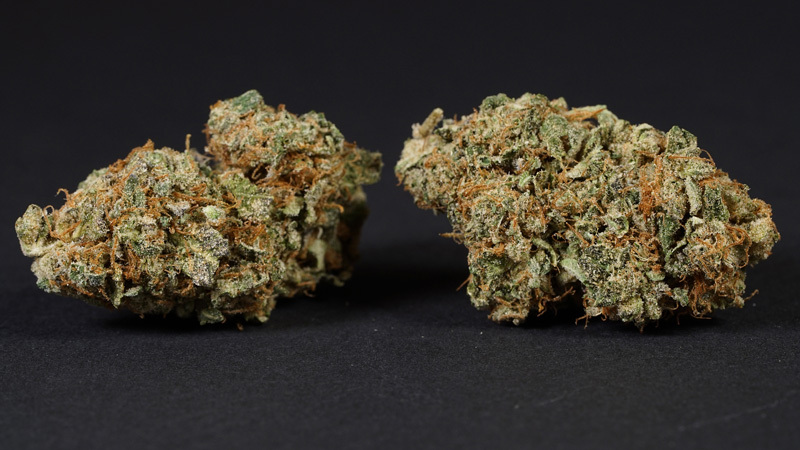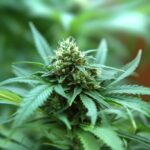Discover Afghani (Afghan Kush), the pure indica landrace strain from Afghanistan’s Hindu Kush mountains. Learn about its ancient genetics, 100% indica effects, hash-making heritage, therapeutic benefits, and cultivation characteristics. Complete guide to this legendary strain.
Afghani Strain Review: The Pure Landrace Indica Legend Complete Guide
Introduction
Afghani, also known as Afghan Kush or simply Afghan, represents one of the most important and influential cannabis strains in the plant’s long history. This 100% pure indica landrace strain originates from the rugged Hindu Kush mountain range of Afghanistan, where it has been cultivated for thousands of years by indigenous peoples who developed sophisticated hash-making techniques that remain legendary to this day.
As one of the earliest and most authentic cannabis varieties still available, Afghani serves as the genetic foundation for countless modern strains while maintaining its own distinct identity as a powerfully therapeutic and deeply relaxing cannabis experience. With its ancient heritage, robust genetics, and profound effects, Afghani offers modern users a direct connection to cannabis’s earliest cultivated forms and the rich cultural traditions surrounding the plant’s use in Central Asia.
Historical and Cultural Significance
Ancient Origins
Cannabis cultivation in Afghanistan dates back thousands of years, with historical records suggesting use for religious, cultural, medicinal, and recreational purposes deeply embedded in Afghan society. The plant’s relationship with Afghan culture runs so deep that cannabis plants can commonly be seen growing in people’s yards even in major cities like Mazar-i-Sharif, despite legal prohibitions.
Legendary Hash Tradition
Afghanistan is widely considered the birthplace of high-quality hashish production. The Afghani strain and its related varieties were specifically developed and selected over centuries for their exceptional resin production, making them ideal for traditional hash-making techniques that Afghan artisans perfected:
- Dry sieving methods: Afghans were the first to sieve cannabis plants rather than hand-rubbing them
- Traditional pressing: Development of techniques for creating high-quality hash bricks
- Charas production: Hand-rolling methods producing premium resin products
- Cultural significance: Hash consumption integrated into social and spiritual practices
Geographic Heritage
The Hindu Kush mountain range, stretching across Afghanistan, Pakistan, and parts of India and China, provides the harsh growing conditions that shaped Afghani’s hardy characteristics:
- High altitude: Elevations often exceeding 18,000 feet
- Extreme weather: Temperature fluctuations and harsh winters
- Rocky terrain: Limited soil requiring adaptive root systems
- Arid conditions: Low precipitation demanding water efficiency
Genetics and Landrace Characteristics
Pure Landrace Status
Afghani is classified as a true landrace strain, meaning it developed naturally in its native environment without human breeding intervention with other cannabis varieties. This genetic purity provides several advantages:
Genetic Stability: Centuries of natural selection created stable, predictable characteristics Environmental Adaptation: Perfectly suited to harsh growing conditions Therapeutic Consistency: Reliable effects due to genetic uniformity Breeding Value: Pure genetics highly sought after for creating new varieties
Genetic Profile
Indica/Sativa Ratio: 100% Pure Indica THC Content: 15-20% (moderate by modern standards but potent for landrace) CBD Content: Variable, often higher than modern hybrids Flowering Time: 7-8 weeks (exceptionally fast for indica) Grow Difficulty: Easy to moderate
Genetic Influence on Modern Cannabis
Afghani genetics have contributed to numerous legendary strains:
- Northern Lights: Direct Afghani descendant
- Blueberry: Incorporates Afghani genetics
- Hash Plant: Enhanced Afghani selection
- Master Kush: Likely contains Afghani lineage
- Countless OG varieties: Many trace roots to Afghani genetics
Physical Characteristics
Appearance
Afghani exhibits classic pure indica characteristics:
- Compact, bushy structure with dense internodal spacing
- Dark green foliage with broad, wide leaflets
- Dense, resinous buds covered in trichomes
- Short stature typically remaining under 4 feet
- Thick, sturdy stems capable of supporting heavy colas
- Exceptional trichome production ideal for hash making
Aroma and Flavor Profile
Primary Terpenes:
- Myrcene: Provides earthy, musky base notes and sedative effects
- Caryophyllene: Contributes spicy, peppery complexity and anti-inflammatory properties
- Pinene: Adds fresh, piney aromatics balancing earthier elements
- Humulene: Brings herbal, hoppy notes
Aromatic Experience:
- Primary: Deep, earthy hash-like aromas with musky complexity
- Secondary: Spicy, herbal notes with pine undertones
- Tertiary: Sweet, floral elements balancing the earthiness
Flavor Profile:
- Inhale: Rich, earthy flavors with hash-like complexity
- Mid-palate: Spicy, herbal notes with woody undertones
- Exhale: Lingering earthiness with sweet, musky finish
The strain’s flavor profile directly reflects its hash-making heritage, providing authentic tastes that have remained unchanged for centuries.
Effects and Experience
Primary Effects
Physical Sensations:
- Profound full-body relaxation leading to deep sedation
- Heavy, euphoric body high with tingling sensations
- Complete muscle tension release
- Pain relief for chronic conditions
- Sleep induction particularly effective for insomnia
Mental Experience:
- Deep mental relaxation and tranquility
- Stress and anxiety relief without paranoia
- Euphoric contentment and happiness
- Meditative states supporting spiritual practices
- Mental stillness ideal for contemplation
Onset and Duration
Experience Timeline:
- 0-15 minutes: Initial relaxation with mood elevation
- 15-60 minutes: Deep body effects reach peak intensity
- 1-3 hours: Sustained relaxation with potential for sleep
- 3-6 hours: Gradual tapering with lasting tranquility
Characteristics:
- Smooth, gradual onset without overwhelming rushes
- Long-lasting effects providing extended relief
- Predictable progression allowing for planned use
- Natural sleep transition for nighttime consumption
Medical Applications
Afghani’s pure indica genetics and traditional medicinal use make it exceptionally valuable for various conditions:
Primary Medical Uses
Pain Management:
- Chronic pain conditions: Powerful analgesic properties developed over centuries of medicinal use
- Arthritis and joint pain: Anti-inflammatory effects combined with pain relief
- Muscle spasms and tension: Deep relaxation properties reduce muscular issues
- Neuropathic pain: THC content helps manage nerve-related pain
Mental Health Applications:
- Anxiety disorders: Profound calming effects without stimulation
- Depression: Euphoric qualities combat depressive symptoms
- PTSD: Traditional use for trauma-related conditions
- Chronic stress: Deep relaxation provides comprehensive stress relief
Sleep and Relaxation:
- Insomnia: Exceptionally effective for promoting deep, restful sleep
- Sleep disorders: Helps regulate natural sleep cycles
- Restlessness and agitation: Calming properties promote peace
- End-of-day tension: Traditional evening use for unwinding
Traditional Medicinal Applications:
- Digestive issues: Historical use for gastrointestinal problems
- Respiratory conditions: Traditional smoking and vaporization applications
- Spiritual and ceremonial use: Enhancement of meditative practices
- General wellness: Overall health and vitality support
Cultural Medicine
In traditional Afghan medicine, cannabis was used for:
- Pain relief during childbirth and medical procedures
- Sleep aid for those suffering from nightmares or restlessness
- Appetite stimulation during illness or recovery
- Spiritual practices enhancing connection and meditation
Cultivation Information
Growing Characteristics
Plant Structure:
- Extremely hardy and resilient to environmental stress
- Fast flowering completing in just 7-8 weeks
- High resin production ideal for concentrate making
- Compact size perfect for limited growing spaces
- Robust root system capable of handling difficult conditions
Environmental Adaptability:
- Temperature tolerance: Handles both extreme heat and cold
- Drought resistance: Requires minimal water compared to modern hybrids
- Pest resistance: Natural defenses developed over centuries
- Soil adaptability: Thrives in various soil types and conditions
Cultivation Tips
Indoor Growing:
- Simple requirements: Basic lighting and ventilation sufficient
- Climate flexibility: Tolerates wider temperature and humidity ranges
- Minimal training needed: Natural compact structure
- Fast turnaround: Quick flowering allows multiple harvests per year
- High yield potential: Dense buds provide excellent returns
Outdoor Cultivation:
- Extremely hardy: Survives harsh weather conditions
- Early harvest: Finishes before first frost in most climates
- Low maintenance: Requires minimal care once established
- Natural pest resistance: Fewer issues with insects and diseases
- Diverse climates: Grows successfully in various geographic regions
Hash Production
Afghani’s primary historical use was for hash production, and it remains exceptional for traditional methods:
Traditional Techniques:
- Dry sifting: Excellent trichome separation for traditional hash
- Hand pressing: Dense resin ideal for traditional brick formation
- Temple ball production: Premium hand-rolled hash techniques
- Screen separation: Multiple grades of hash from single plants
Modern Applications:
- Bubble hash: Ice water extraction produces exceptional quality
- Rosin pressing: Solventless extraction preserving terpene profiles
- Live resin: Fresh-frozen material creates superior concentrates
- Traditional charas: Hand-rolling methods producing premium products
Consumption Guidelines
Dosage Recommendations
New Users: Start very small due to potent sedative effects (1/4 of normal dose) Moderate Users: Reduce normal dosing due to indica intensity Experienced Users: Standard dosing but plan for deep relaxation Medical Patients: Work with practitioners familiar with landrace characteristics
Traditional Consumption Methods
Historical Methods:
- Chillum smoking: Traditional clay pipe methods
- Hash smoking: Primary consumption method in Afghan culture
- Water pipes: Traditional hookah and bong techniques
- Mixed preparations: Combined with tobacco or other herbs
Modern Applications:
- Vaporization: Preserves terpenes while reducing harshness
- Joint rolling: Classic method highlighting flavor profile
- Concentrate consumption: Modern extraction methods amplify effects
- Edible preparation: Long-lasting therapeutic applications
Best Usage Times
Traditional Timing:
- Evening relaxation after daily labor completion
- Social gatherings for community bonding
- Spiritual practices enhancing meditation and prayer
- Sleep preparation for deep, restful rest
Modern Applications:
- Chronic pain management throughout the day as needed
- Anxiety relief during stressful periods
- Insomnia treatment 1-2 hours before desired sleep
- Weekend relaxation when deep rest is desired
Side Effects and Cultural Context
Common Effects:
- Significant sedation: Traditional use planned around rest periods
- Increased appetite: Culturally incorporated into meal timing
- Dry mouth: Traditionally countered with tea consumption
- Deep sleep: Valued effect in harsh living conditions
Cultural Considerations:
- Communal use: Traditionally consumed in social settings
- Spiritual context: Often incorporated into religious practices
- Medicinal timing: Used specifically for therapeutic purposes
- Seasonal patterns: Consumption often aligned with agricultural cycles
Market Presence and Preservation
Modern Availability
Despite its historical importance, pure Afghani genetics face several challenges:
- Political instability: Ongoing conflict affects cultivation and preservation
- Legal restrictions: Prohibition limits traditional cultivation methods
- Genetic pollution: Cross-breeding threatens pure landrace characteristics
- Commercial pressures: Market preference for higher THC varieties
Preservation Efforts
Various organizations and individuals work to preserve authentic Afghani genetics:
- Seed banks: Maintaining genetic diversity through proper storage
- Landrace preservation: Dedicated breeding programs protecting pure genetics
- Cultural documentation: Recording traditional cultivation and use methods
- Research initiatives: Scientific study of therapeutic applications
Commercial Value
Medical Market: High demand for consistent, therapeutic effects Breeding Programs: Valuable parent genetics for new strain development Concentrate Production: Exceptional resin quality commands premium prices Cultural Interest: Growing appreciation for authentic, traditional varieties
Environmental and Ethical Considerations
Sustainable Cultivation
Afghani’s natural characteristics support sustainable growing:
- Low water requirements: Drought tolerance reduces irrigation needs
- Pest resistance: Minimal pesticide requirements
- Soil adaptation: Grows in marginal soils unsuitable for other crops
- Carbon efficiency: Compact size and fast flowering reduce resource use
Cultural Sensitivity
When consuming or cultivating Afghani, consider:
- Cultural heritage: Respect for traditional Afghan cannabis culture
- Fair trade: Supporting Afghan farmers when possible
- Genetic preservation: Choosing authentic varieties over commercial imitations
- Educational value: Understanding historical and cultural context
Future Prospects
Research Opportunities
Afghani’s ancient genetics offer unique research possibilities:
- Therapeutic compounds: Study of traditional medicinal applications
- Genetic analysis: Understanding landrace characteristics
- Cultivation techniques: Learning from traditional growing methods
- Cultural medicine: Documenting traditional therapeutic uses
Conservation Importance
Preserving pure Afghani genetics is crucial for:
- Genetic diversity: Maintaining cannabis gene pool health
- Medical research: Access to authentic therapeutic genetics
- Cultural heritage: Preserving traditional knowledge and practices
- Future breeding: Foundation genetics for developing new varieties
Market Evolution
As cannabis markets mature, Afghani genetics may gain renewed appreciation:
- Therapeutic focus: Medical market interest in consistent, reliable effects
- Craft cultivation: Artisanal growers appreciating authentic genetics
- Hash renaissance: Growing interest in traditional concentrate methods
- Cultural education: Increasing awareness of cannabis history and heritage
Conclusion
Afghani stands as one of cannabis’s most important and influential strains, representing thousands of years of natural selection and cultural development in one of the world’s most challenging growing environments. This pure indica landrace offers modern users a direct connection to cannabis’s ancient heritage while providing some of the most reliable and therapeutic effects available in contemporary cannabis.
The strain’s profound significance extends far beyond its psychoactive properties. Afghani represents the foundation of modern cannabis genetics, having contributed essential characteristics to countless contemporary varieties while maintaining its own distinct identity as a powerfully therapeutic and spiritually significant plant medicine.
For medical patients, Afghani offers unparalleled consistency and therapeutic value, providing reliable relief from chronic pain, insomnia, anxiety, and numerous other conditions without the unpredictability that can accompany modern hybrid genetics. Its traditional use for medicinal purposes over millennia provides confidence in its therapeutic applications that modern strains cannot match.
Recreational users seeking authentic cannabis experiences will find Afghani’s pure indica effects both profound and satisfying. The strain’s ability to provide deep, meditative relaxation while maintaining the complex terpene profiles developed over centuries offers a cannabis experience that connects users to the plant’s rich cultural history.
Cultivators value Afghani for its exceptional hardiness, fast flowering time, and superior resin production that makes it ideal for both flower consumption and traditional hash production. Its genetic stability and predictable characteristics make it an excellent choice for growers seeking reliable results without the complexities of modern hybrid genetics.
Perhaps most importantly, Afghani serves as a living link to cannabis’s cultural heritage, representing thousands of years of human relationship with this remarkable plant. Its preservation





